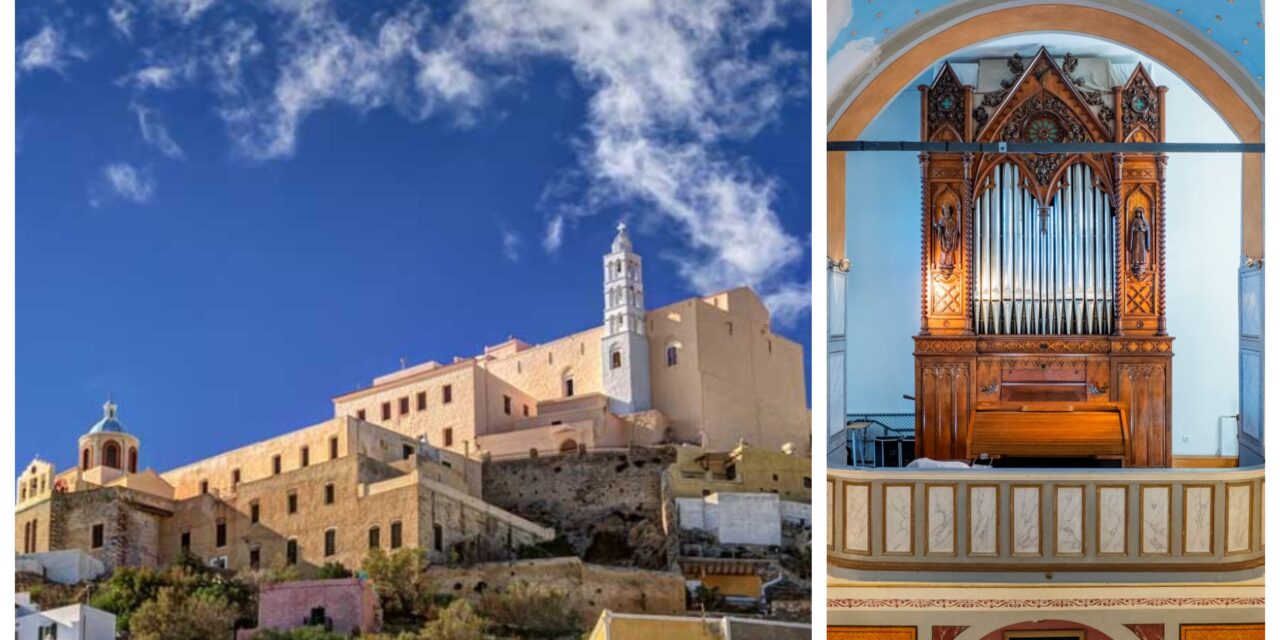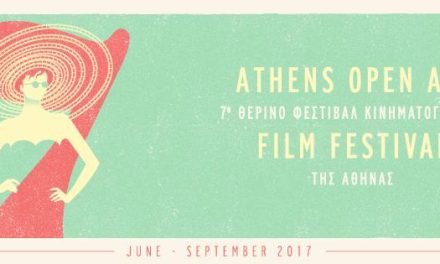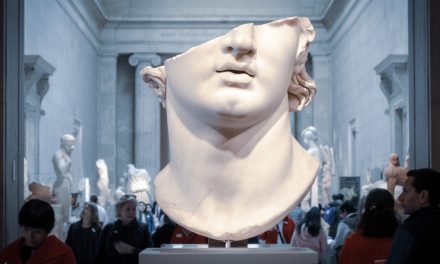Ano Syros is located on one of the two large hills above Ermoupolis, the capital of the island of Syros. The settlement was sometimes referred to as the “hill of Catholics,” as ιτ used to be inhabited mainly Catholics islanders, who trace their origins to Venetian merchants and Frankish crusader and settled there as a safer location during the Middle Ages, when the island was subject to frequent raids by pirates. The large gates, which to this day constitute the central entrances tothe settlement (Portara, Epano and Kato Terma, Skalakia, Sa-Bastias), were closed with large wooden doors for greater protection from raids, mainly at night. In the 12th century,
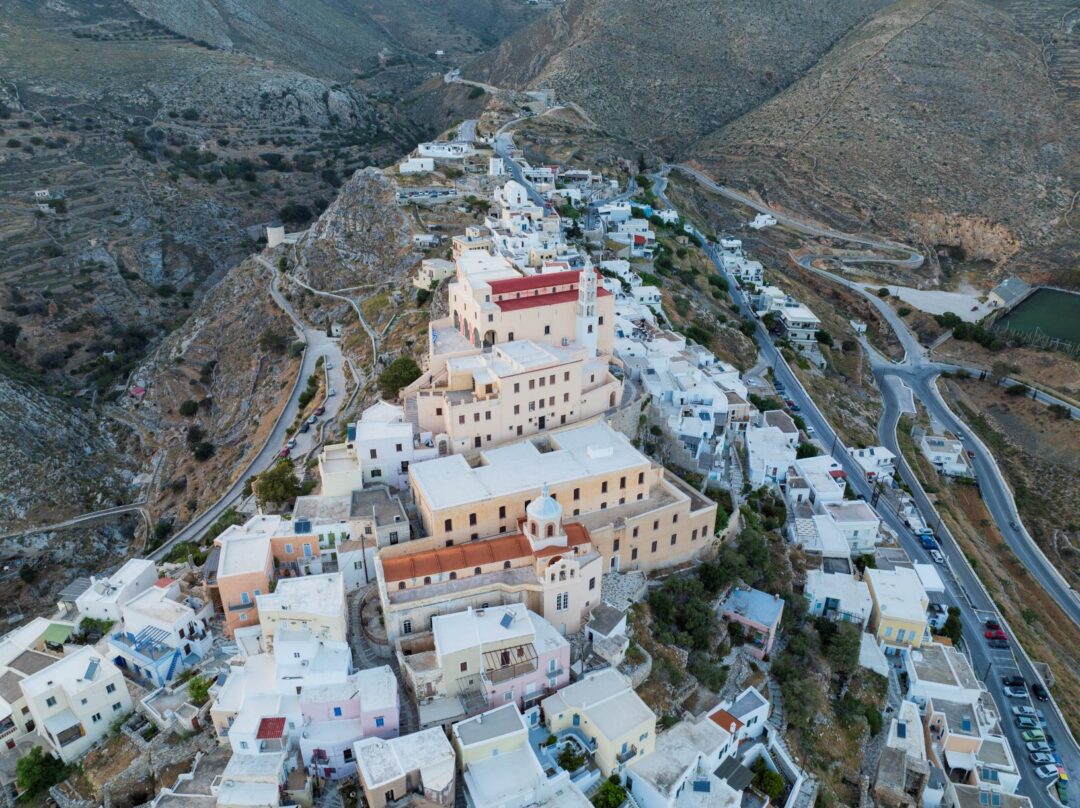
Ano Syros was part of the Duchy of Naxos, until 1537, when the Duchy became a tributary of the Ottoman Empire, and was annexed by the Ottomans in 1579. The inhabitants of Ano Syros actively participated in the Struggle of 1821 and in the two world wars, but also in the Resistance, many lost their lives fighting, as can be evidences a Heroes’ Monument with their names of the fallen inside the settlement. Until the foundation of Ermoupoli, the first residential core of Ano Syros was exclusively Catholic. In fact, he had been placed under the protection of the king of France.
From 1890 onwards, the French Hospital was created, various associations were founded and the large cobbled road was built that connects the medieval settlement with Ermoupolis. It is one of the few medieval settlements in Greece that is in such good condition and has been regularly inhabited for almost eight centuries.
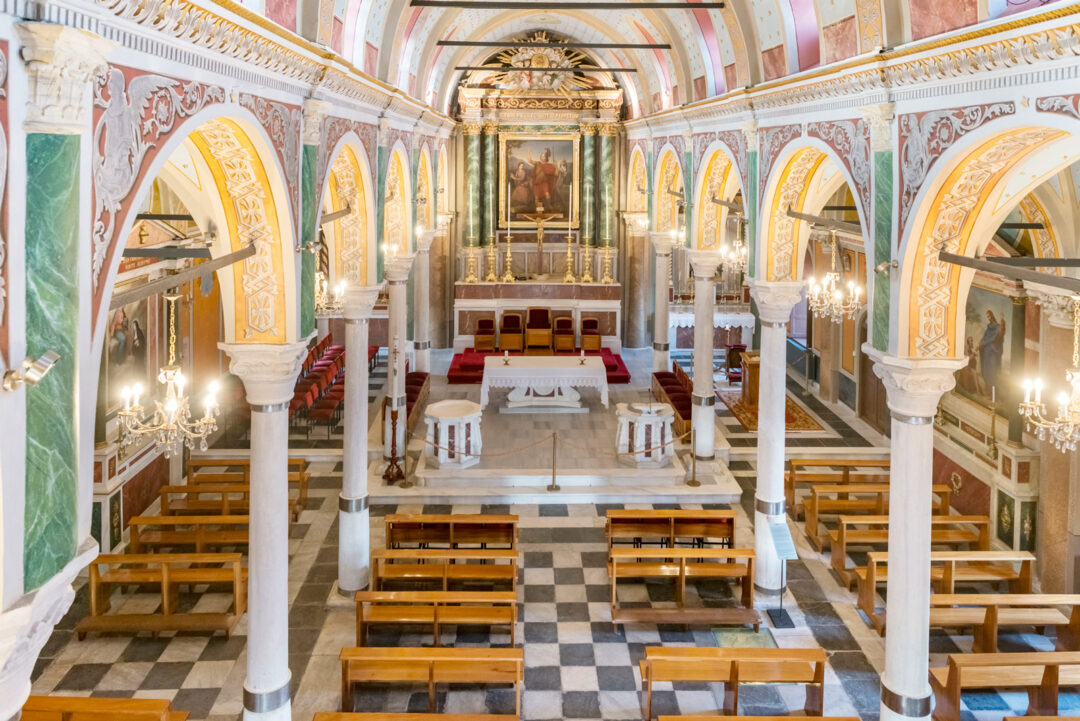
Built around 1200, the majestic Saint George Cathedral, also known locally as San Tzortzis, dominates the top of the medieval settlement of Ano Syros. It is built on top of an older Byzantine church and is considered the most beautiful Catholic church on the island; it is also the largest and the seat of the Catholic Diocese of Syros. From its construction until today, it has undergone numerous renovations, the most important of which dates back to 1834, after it was completely destroyed by the Ottomans in 1617. That was when most of the Diocese’s archives were destroyed. The renovation of 1834 was undertaken by Tinian architect Hatzisimos Nikolaos and it was he who gave the temple its current form. Maintenance work of the temple took place in the last decades as well.
The building complex includes the church, the three-story bell tower of 1855, the baptistery (originally the chapel of the Holy Cross), the sacristy, the building with the historical archive and the episcopal palace. Inside the church is an icon dedicated to Our Lady of Hope which is considered miraculous, as it is believed that she saved the population of Ano Syros from a cholera epidemic in August 1854. Other important relics are the icons of the Sacred Heart of Jesus Christ, Saint Peter and Agios Andreas.
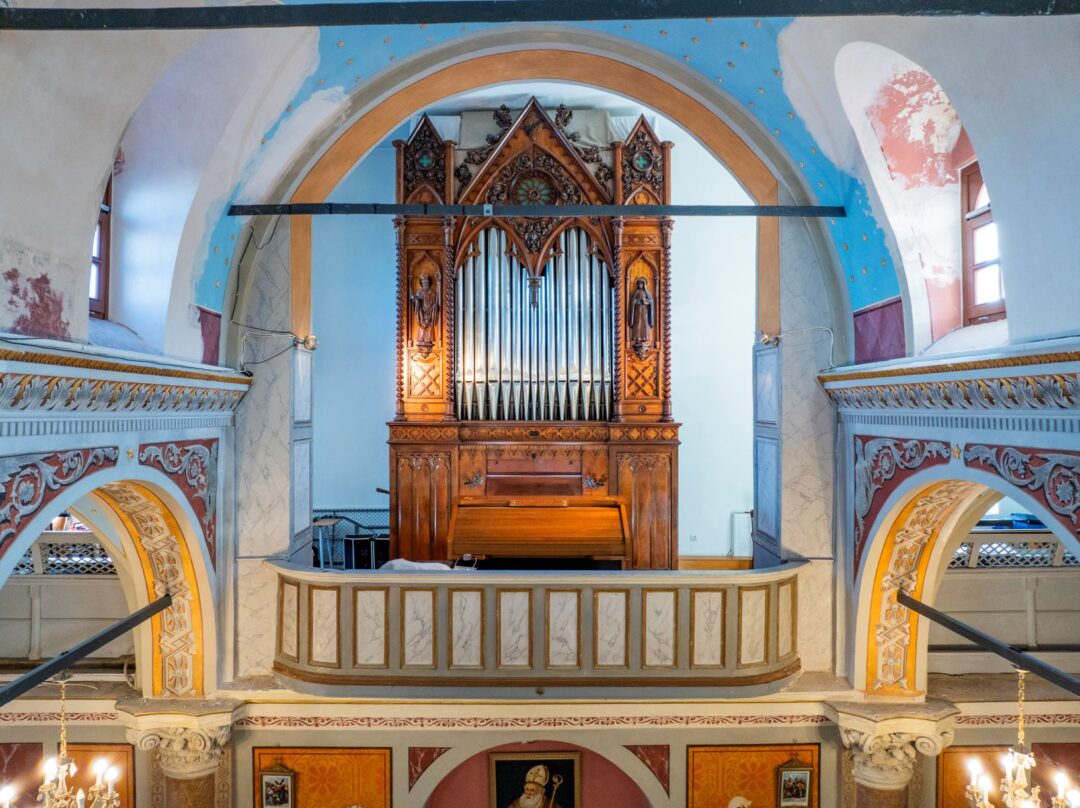
One of the most important artifacts of the temple is its organ, the oldest church organ in Greece. This impressive instrument was built in 1888 by the Italian Zeno Fedeli organ builders in Umbria, and was donated by Pope Leo XIII to the Cathedral of Agios Dionysios in Athens. It stayed there until 1951, when, on the initiative of Bishop Georgios Xenopoulos, it was transferred to Syros.
Since then, the church organ of the Zeno Fedeli house with its beautiful neo-gothic style wood-carved facade has been located in the porch of the entrance of the Cathedral of San Tzortzis of Ano Syros. For many years it served the needs of the church and the religious ceremonies of the Catholic community, but gradually the mechanical problems due to its age and the lack of Greek technicians for its maintenance and stringing had condemned it to silence and obscurity.
In 2016, at the initiative of the, His Excellency Petros Stefanou, Bishop of the Catholic Diocese of Syros, it was partially repaired and it sounded again. For the needs of the repair, the Italian craftsman Saverio Tamburini, 4th generation of manufacturers of the house of the same name, who has built important church instruments all over the world (Milan, Vatican, Messinia, Mexico, Bologna) was enlisted. Its restoration was completed in 2019 with a donation from the Stavros Niarchos Foundation.
“ANO” International Organ Festival
Since 2017, with a view to showcasing the organ in St. George’s Cathedral in Ano Syros and, at the same time, revive the Ano Syros medieval settlement, the Catholic Diocese of Syros has been organizing the “ANO” International Organ Festival. The festival’s program of events includes concerts, lectures, viewings of the pipe organ as well as tours of the Ano Syros medieval settlement.
In August 2024, for the eighth consecutive year, the Catholic Diocese of Syros and the Association of Greek Catholics of Syros held the ANΩ International Organ Festival, featuring a program dedicated to the great Greek composer originating from the Cyclades, Nikos Skalkotas. Furhtermore, the festival highlighted its international character with prominent invited artists and organists of famed cathedrals in Poland, the Czech Republic, Spain, Italy and the United Kingdom.
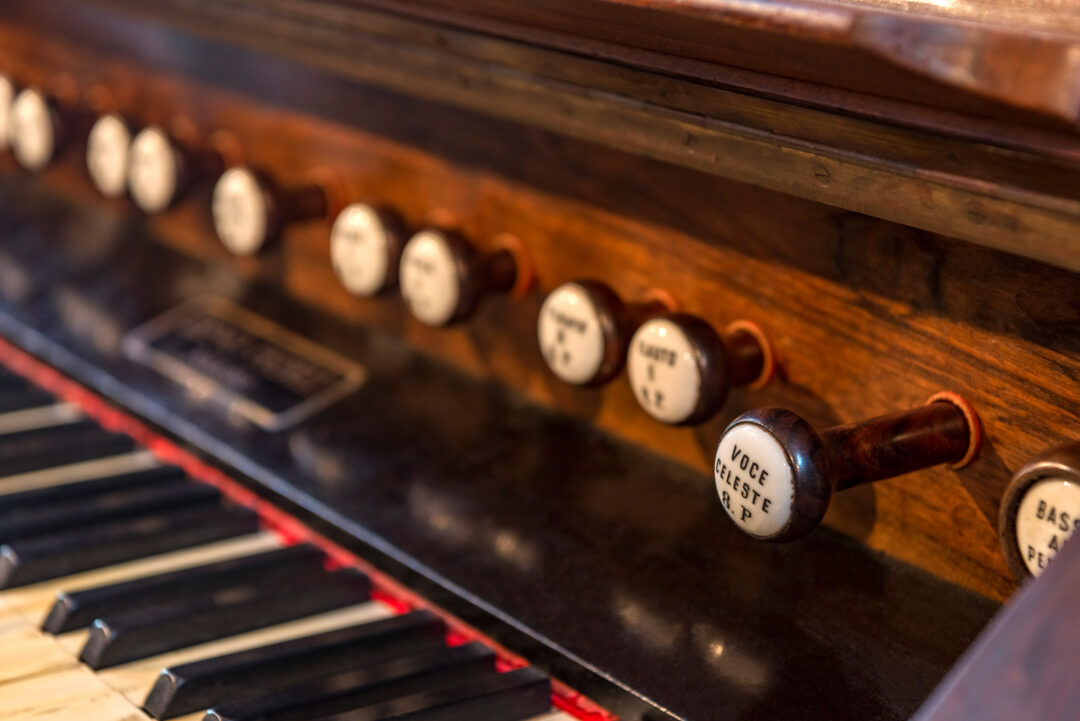
This year’s Festival also presented the ANΩ FESTIVAL ORCHESTRA (AFO) to audiences for the first time. The ensemble includes young musicians from Greece, Poland and the Czech Republic, along with experienced musicians from the Athens State Orchestra, under the direction of the Festival’s artistic director and distinguished conductor of international repute, Stefanos Tsialis.
Also for the first time, the Festival extended its activities beyond Syros, with the ANΩ Festival Orchestra giving a second concert – after its inaugural appearance at the courtyard of Sisters of Mercy Monastery in Ermoupoli – at the Church of the Immaculate Conception in Fira, Santorini.
A special treat for festival audiences this year was be a photography exhibition titled “The Organs of Greece”, curated by photographer Dimitris Vamvakousis. All of the organs located in churches throughout Greece, as well as at the Megaron Athens Concert Hall, were photographed within a period of 20 days and the photographs displayed at the Cathedral of St. George in Ano Syros.
The 18 churches organs that exist today in our country are located in churches, except for one, the largest in size, which was built in 1993 and is located in the Athens Concert Hall – it took three months of daily 8-hour work by a team of six specialists who arrived from Bonn to build it. Unfortunately, some of these wonderful ecclesiastical organs remain mute and decommissioned awaiting interventions for their restoration.
These include the church organ of the Armenian Evangelical Church of Greece in Nice, which was built in 1882 in Denmark by Knud Olsen, and the church organ of the Catholic church of Agia Barbara in Lavrio, Attica, which belongs to the Victorian organs era, which adorned the living rooms of rich families, which is why its enclosure is a particularly elaborate piece of furniture with decorative shapes and beautiful lighting sconces. The two impressive church organs in Corfu, made in Italy, one of them 176 years ago, are also out of operation.

